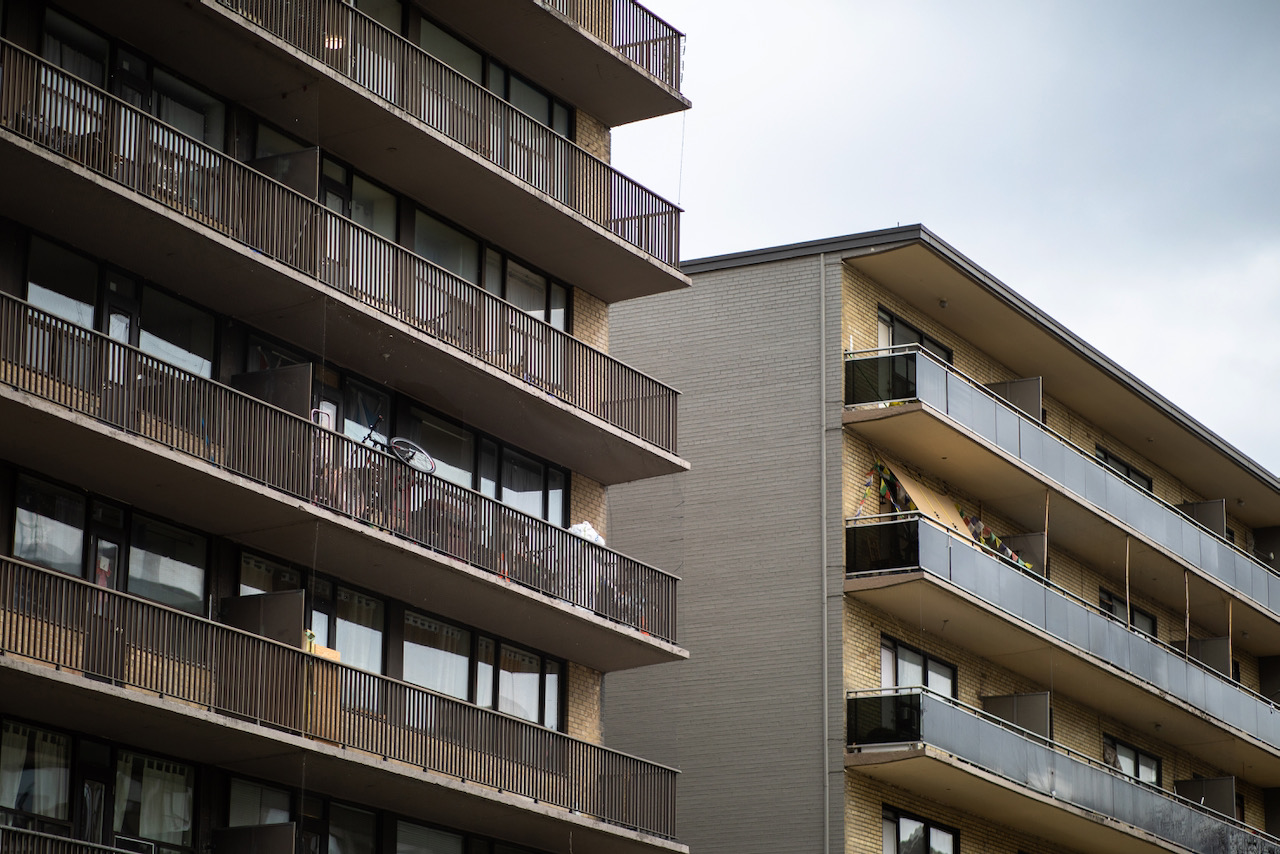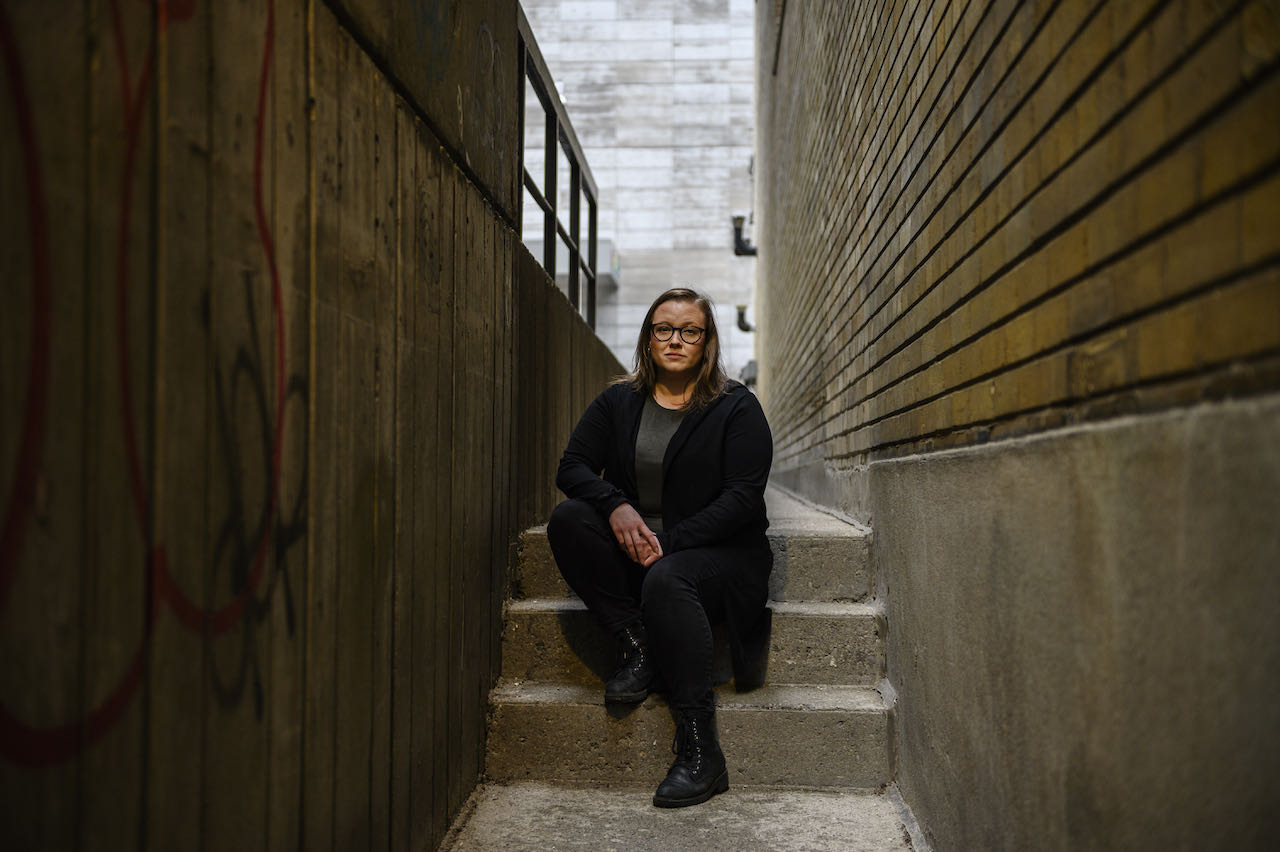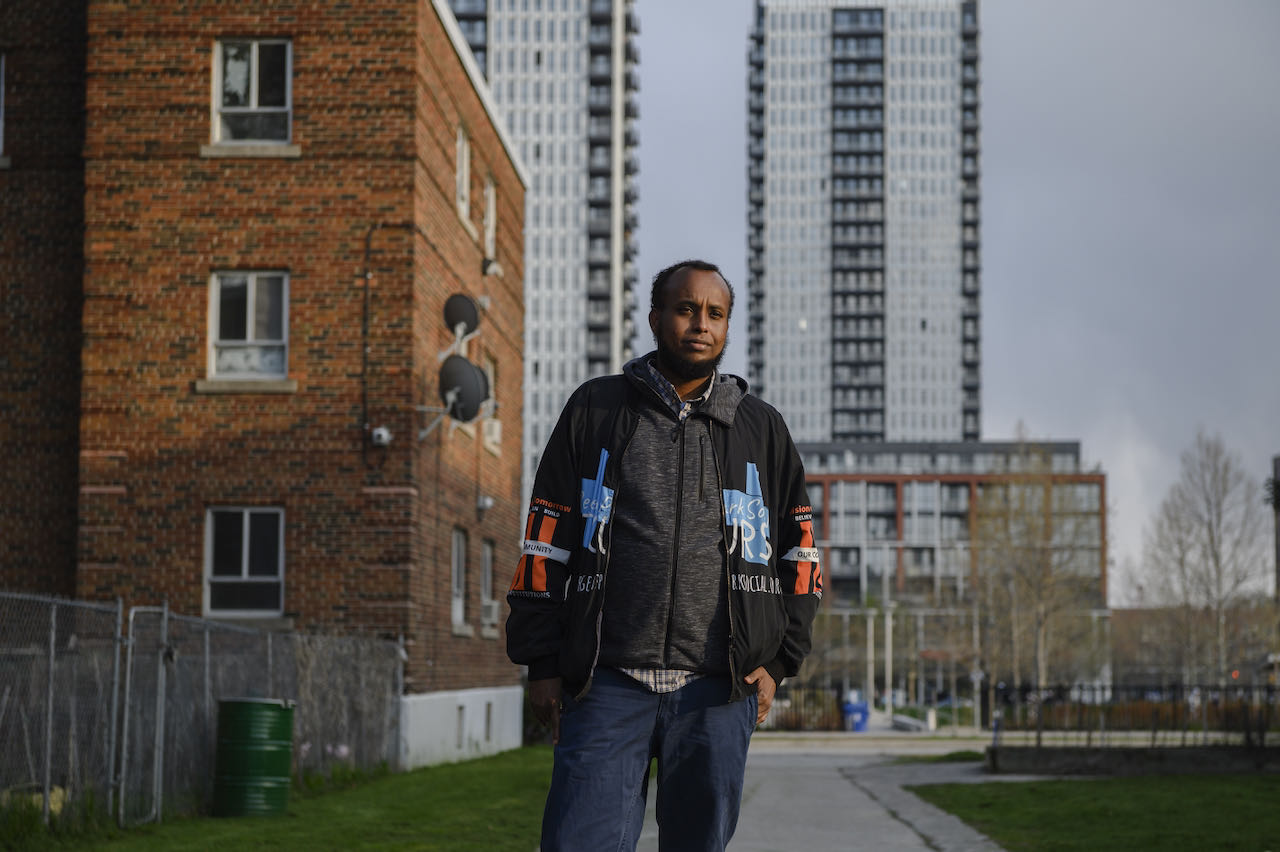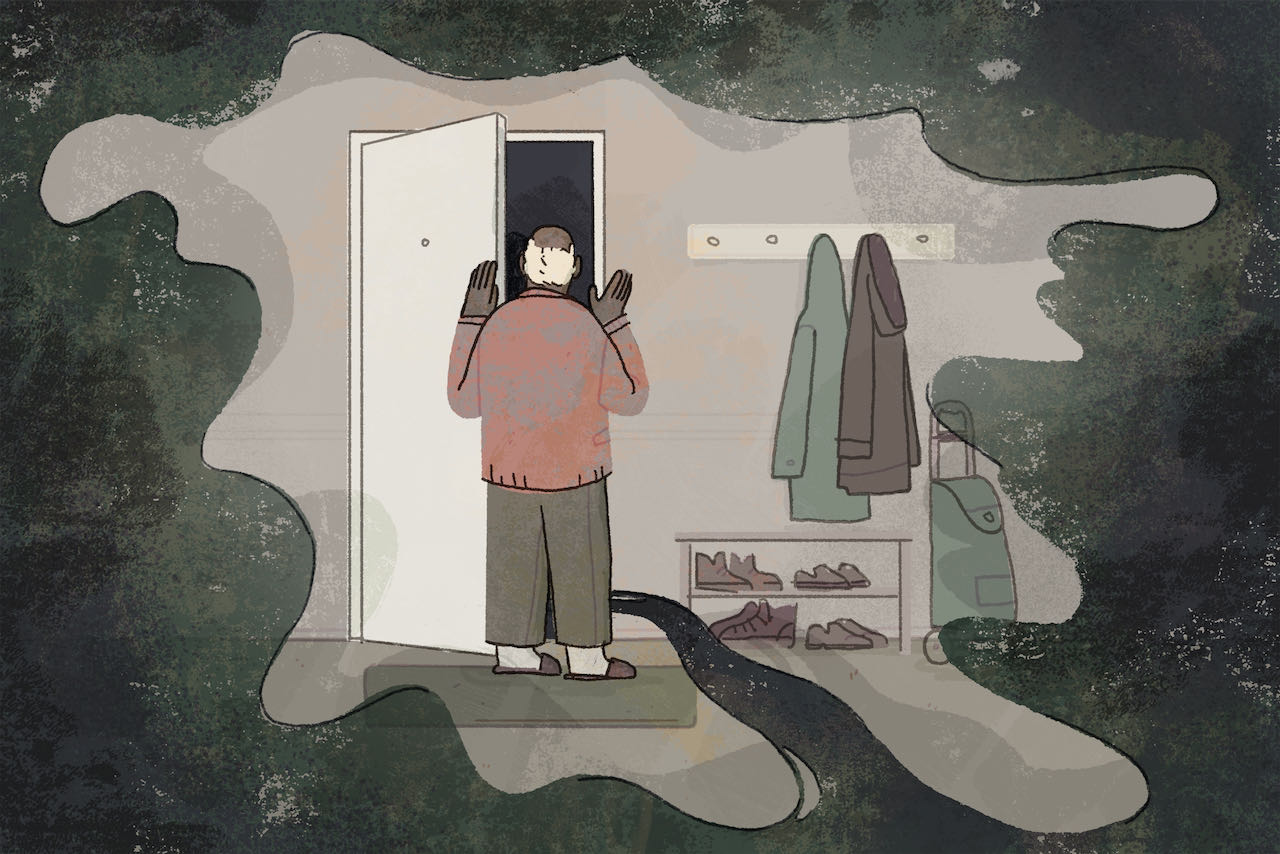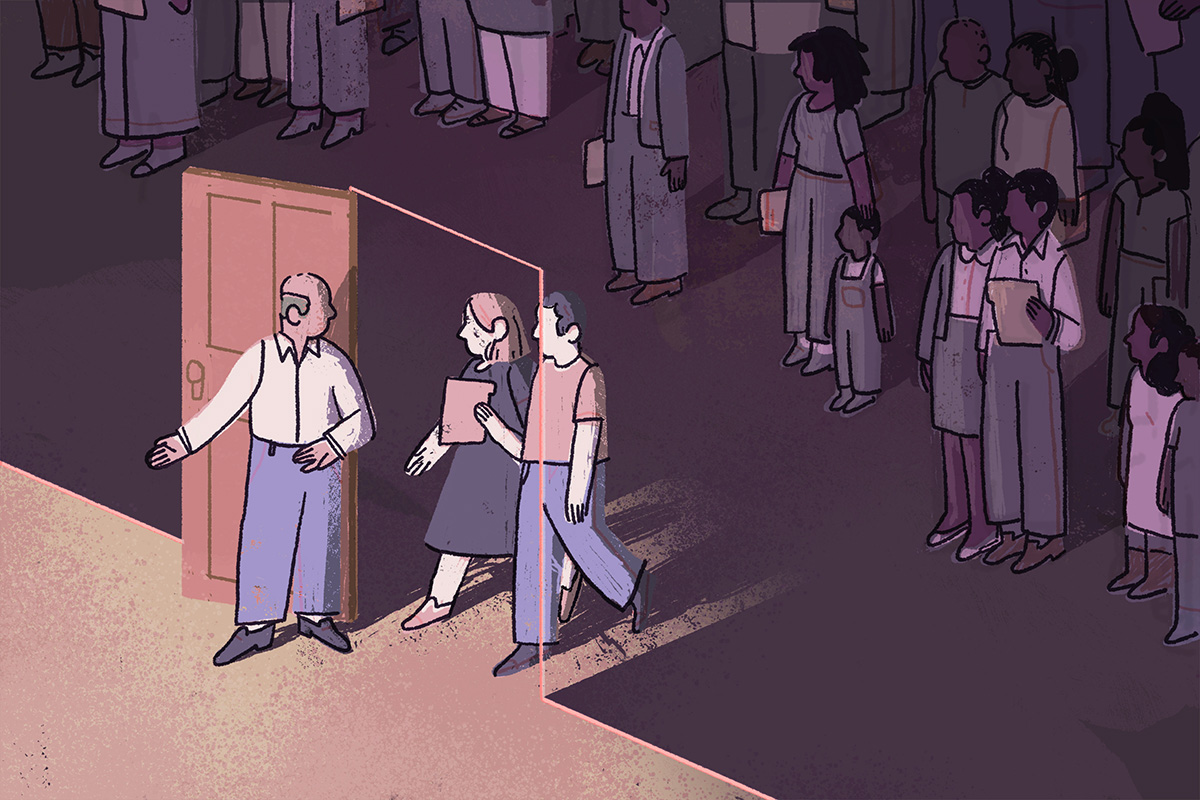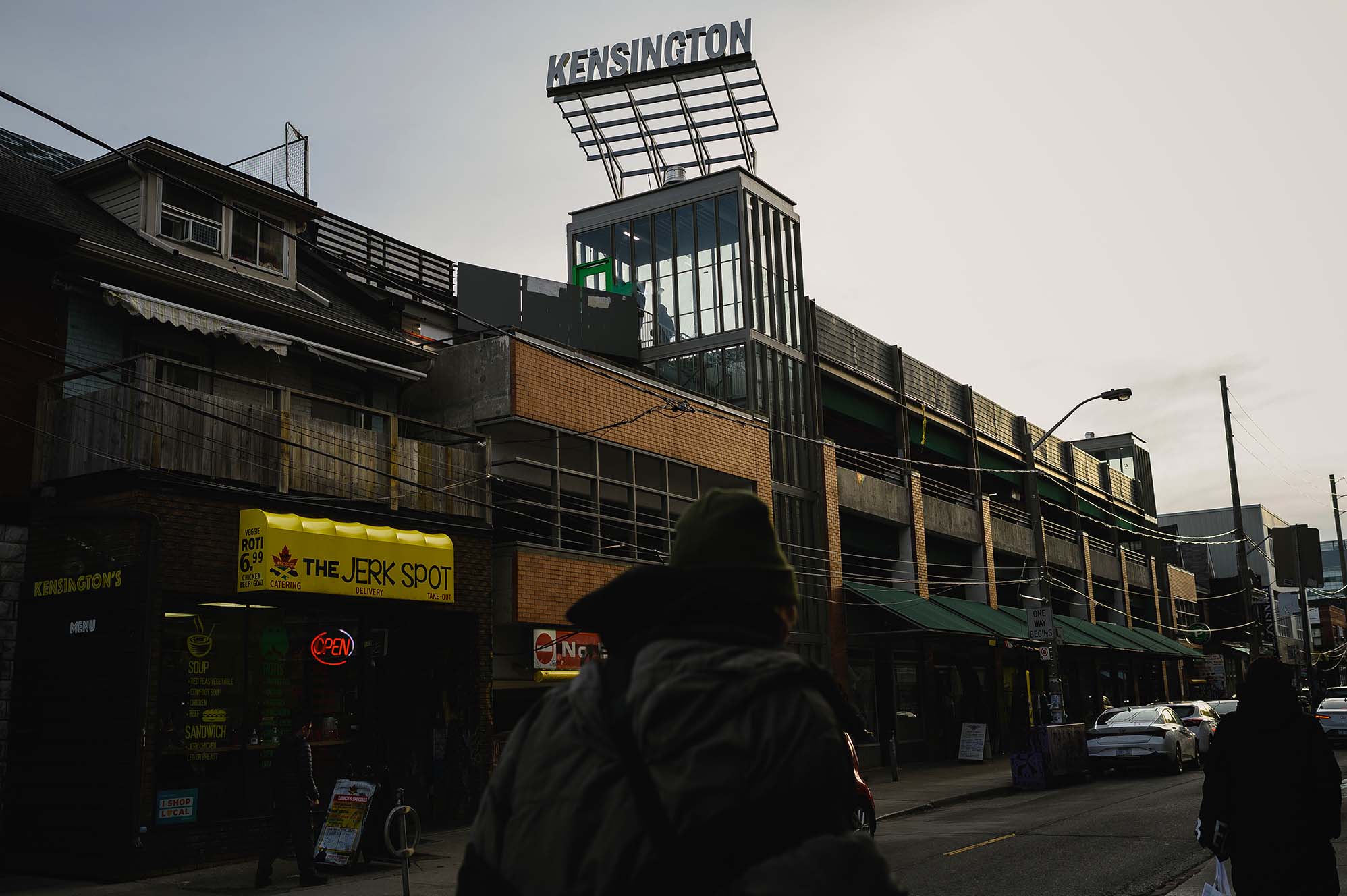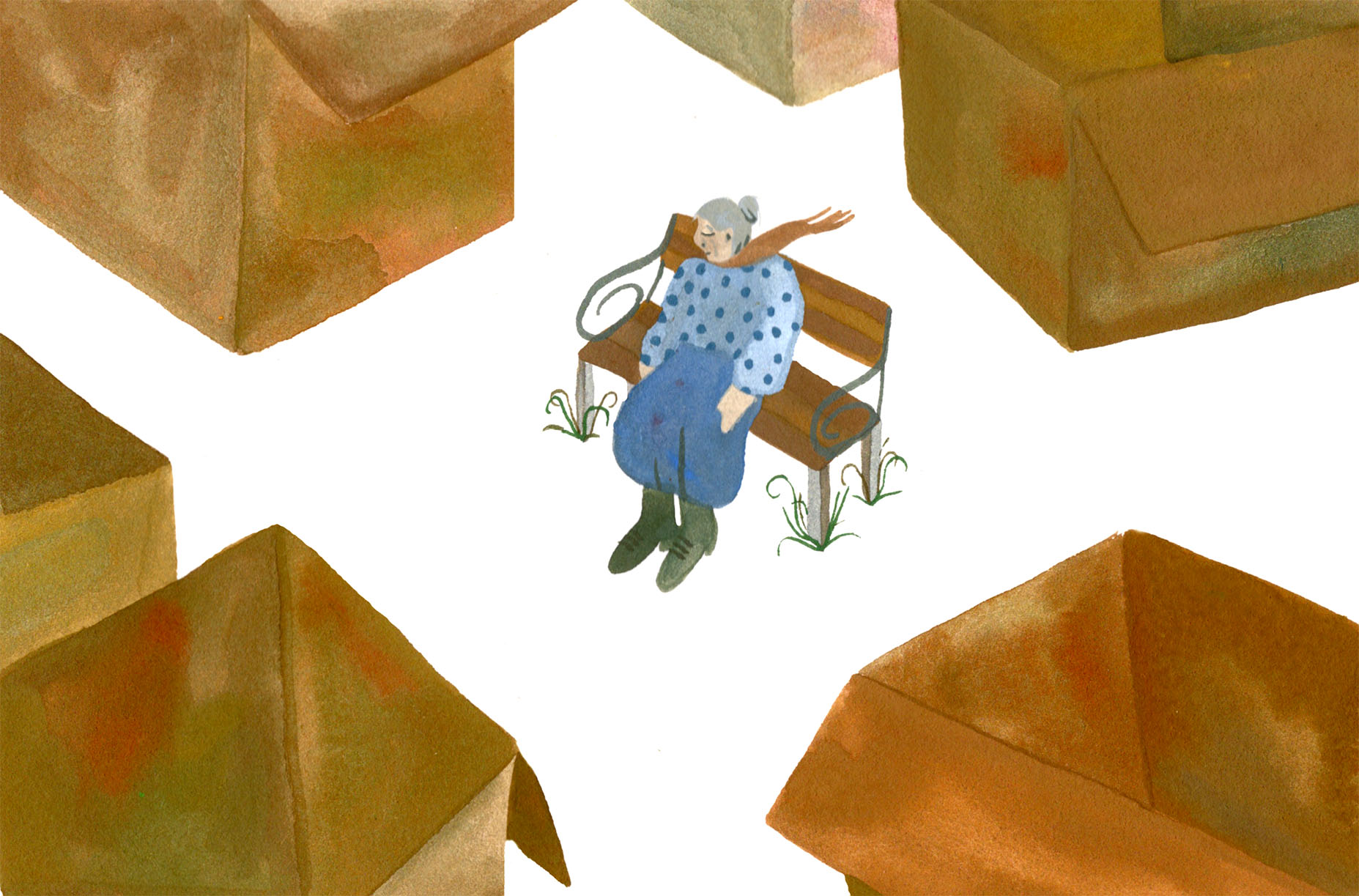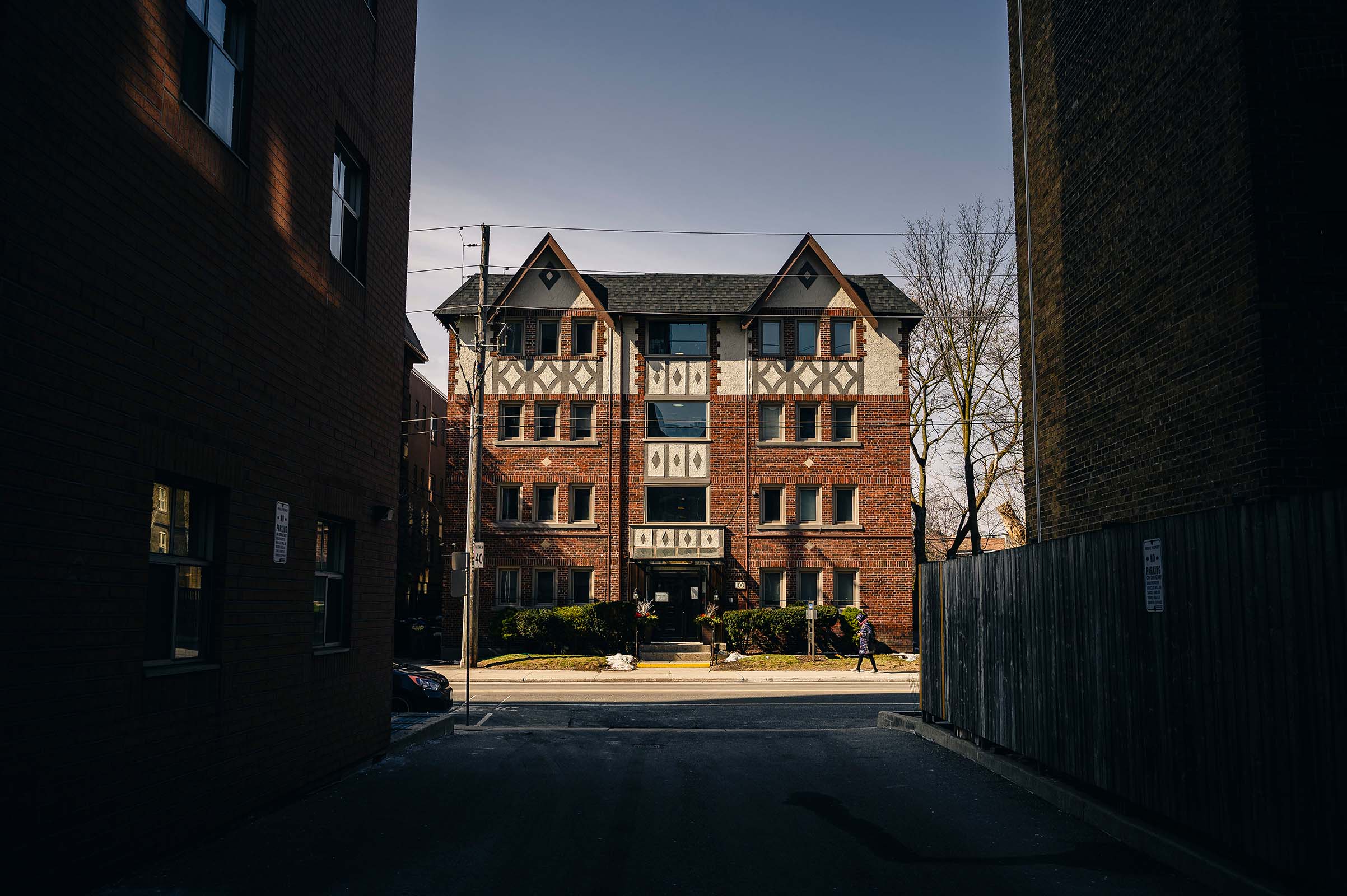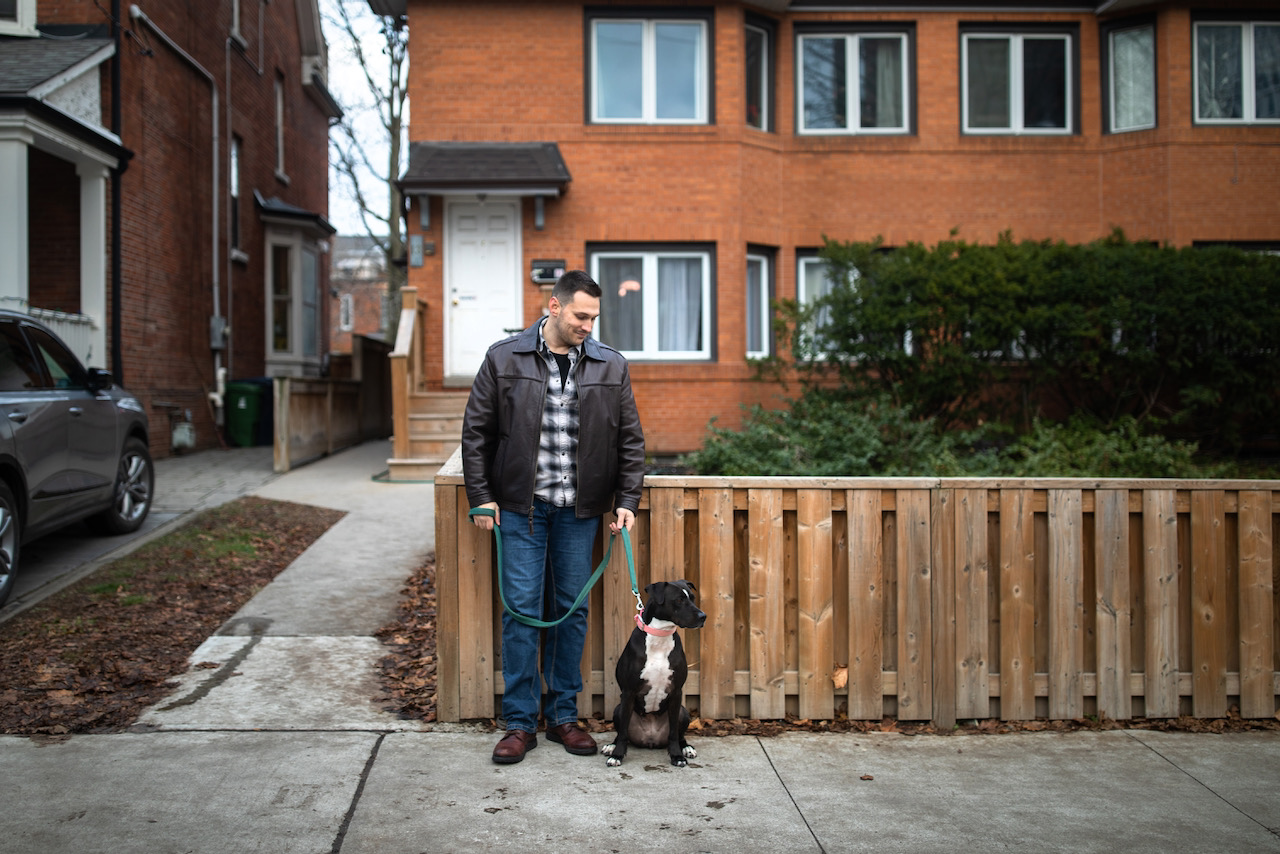
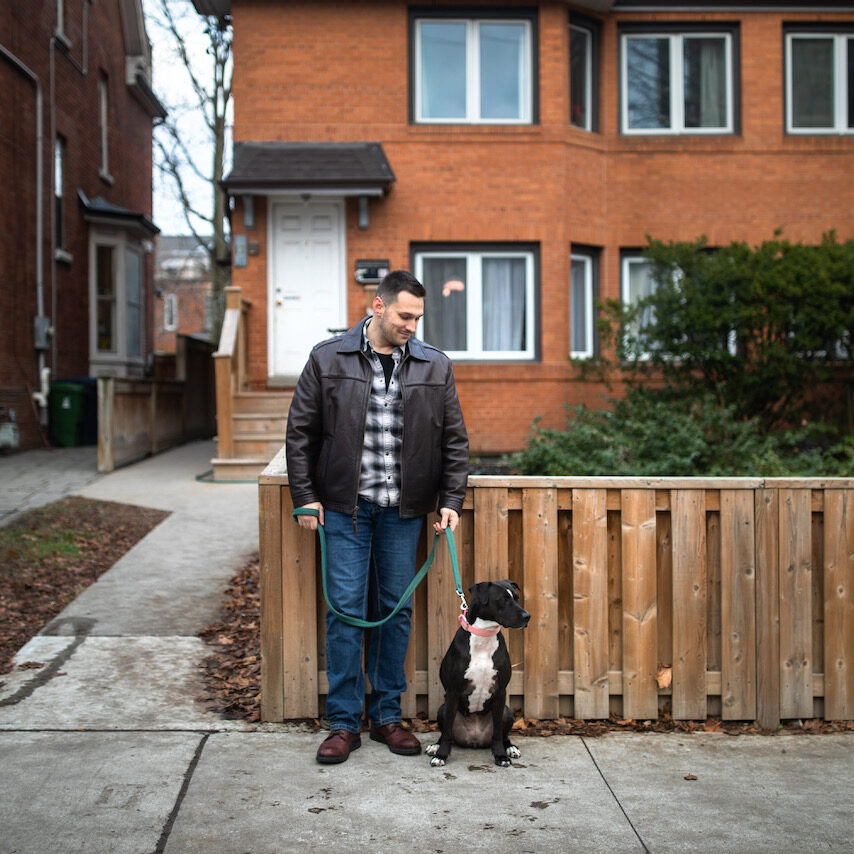
Anthony Foster has lived in the same two-bedroom apartment in a Toronto Community Housing building for 14 years. The building is a six-unit, market-rent triplex at Bloor and Bathurst. For a while, the 34-year-old had a roommate, but currently, it’s just him and his dog, a rescue named Abby. When Foster found the place, back in 2008, he was a second-year student at the University of Toronto. He stumbled across the apartment through a friend of a friend, but was so excited to find a convenient and affordable place, he signed a lease before he’d even set foot in it (a glimpse through the windows was enough). It was, Foster said later, a “godsend”—close to school, downtown, the TTC. The rent, which currently sits around $1500 a month, was within his means.
Created in 2002 in the wake of Mike Harris’ forced amalgamation of the city, the Toronto Community Housing Corporation (TCHC) combined two other agencies to become the second-largest housing provider in North America. For years, the Harris government had been attacking and undermining affordable housing: in the mid-90s, it cancelled hundreds of construction contracts; in 2000, it was the first provincial government to download full responsibility for social housing to municipalities. Now, TCHC owns and manages about 60,000 rental housing units, but it is a highly politicized entity, its executive and budget consistently shaped by leadership at City Hall.
TCHC may not have had the greatest reputation, but as far as Foster was concerned, it turned out to be a decent enough landlord. There were hiccups—a lease that initially shifted inappropriate costs onto tenants, and later, some neglected repairs—but Foster chalked those up to the agency’s massive bureaucracy. More worrisome to him was a growing sense of precarity. While he was perfectly content in his home, he became increasingly concerned, as Toronto’s rents and real estate prices skyrocketed around him, about its long-term stability. (According to the Canadian Mortgage and Housing Corporation, the average rent for a two-bedroom apartment in Toronto increased almost 47 percent between the time Foster signed his lease and fall 2021.) He felt that the city had a long history of selling public assets for short-term gain, and feared that, with time, it might sell off buildings like his. Finding another affordable apartment in the downtown core would be extremely difficult. “I likely would have had to leave the city altogether,” he says, “given current rents.” He was lucky, he had a job, working in health care. But his other neighbours, some of them elderly, didn’t have as many options. Foster also occasionally provided a safe harbour for his siblings. One of his brothers had struggled with addiction and was currently unhoused; Foster let him stay with him when he needed. When another brother was “renovicted,” he moved in with Foster too. If he lost the apartment, his whole family would be upended.
Then, a couple years ago, TCHC came to tell Foster that his building was being sold. Sort of. As part of its Tenants First project, launched in 2018 to improve the quality and services of TCHC, the city planned to transfer its so-called “scattered housing portfolio” of 637 single-family homes to non-profit social housing providers. The city and TCHC issued a request for proposals from providers, promising that Foster and all other tenants would be able to stay in their homes, and any existing rent subsidies would continue. But the transfer was delayed, and there was less and less communication from TCHC. What if they didn’t receive an adequate proposal? Foster’s uncertainty grew.
On April 1, 2022, however, he and his neighbours finally received some good news. Their building was being purchased by a not-for-profit charitable organization, a community land trust (CLT) known as the Neighbourhood Land Trust, in conjunction with YWCA Toronto, with both organizations pledging that they would forever maintain the building as affordable housing. And they hadn’t just acquired Foster’s apartment, but 81 TCHC single-family homes and small buildings all over Toronto’s west end. Most of these tenants had no idea what The Neighbourhood Land Trust was, but its mandate—basically, to take land out of the market and let the community own and manage it—was undeniably compelling.
Foster was, of course, deeply relieved. At the same time, there were new questions. The first one was obvious—how did a community land trust even work? “It was nothing I’d been aware of or considered before,” Foster says of the concept. But once he became more familiar with the ideas behind the CLT, and learned he and his neighbours could participate in the management of their own residence and community, he saw a revolutionary potential. “It really opened people’s eyes,” Foster says, “to different forms of sustainable occupancy—to different ways of being.”
The very first community land trust, New Communities Inc., emerged from the American civil rights movement more than 50 years ago. In 1969, in rural Georgia, community organizers were looking for a way to protect African Americans from the eviction and job loss that desegregation had engendered. Taking ownership of the land they lived, worked, and farmed on looked like the best, most direct path to independence and security. Inspired by the kibbutz movement in Israel, the organizers purchased a large parcel of farmland, with profits from the sale of soy and corn used to service debt on the land. While discrimination and drought led to the collapse of the original farm in 1985, New Communities continued its mission of economic and community development. It also paved the way for dozens of other innovative CLTs across the U.S. and Europe, each with distinctive ambitions, governance structures, and financial arrangements.
When Bernie Sanders was mayor of Burlington, Vermont, in the 1980s, he famously championed a CLT as a way to create affordable housing in that city; it became, and remains, the largest, most successful land trust in the country. Canada was slow to adopt the model, with a few CLTs created in the 80s, largely tied to the co-op housing network or to rural land conservation. But a couple decades later, as major cities grew increasingly dense, with gentrification rampant and real estate overheating, the model became increasingly attractive.
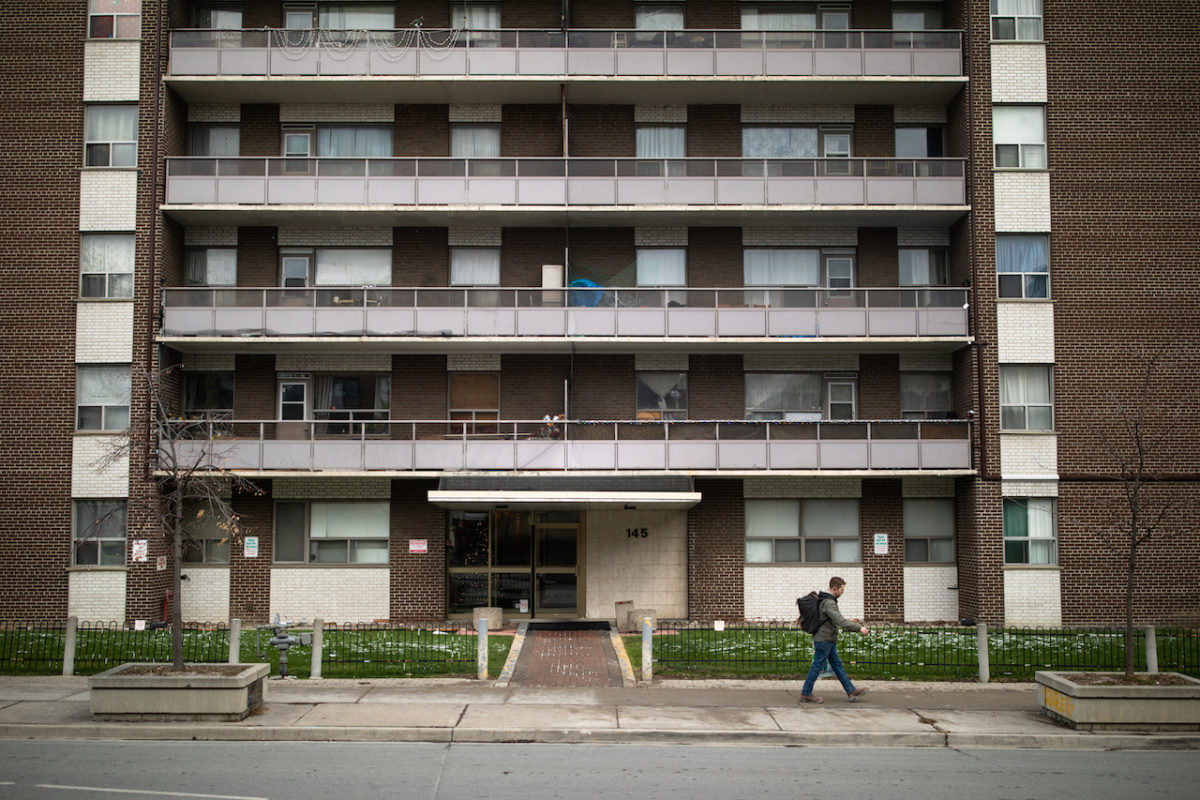
Parkdale, a diverse working-class neighbourhood in Toronto’s west end, long resisted the feverish housing market that transformed the city. The neighbourhood’s grit, poverty, and a perceived sense of lawlessness protected it, in a way, from speculators. But as waves of gentrification moved westward, along Queen Street West and across Liberty Village, Parkdale, too, would eventually succumb. The first, familiar stage of gentrification involved middle- and higher-income households purchasing homes, often converting multi-unit houses back into single-family residences. The commercial and retail strip went through its own paroxysms, with fast-food franchises and dive bars displaced by high-end restaurants, nightclubs, and hip boutiques.
By 2010, however, as land values escalated, and real estate became further out of reach, a second, even more pernicious, stage of gentrification arrived. The non-profits that had long served Parkdale’s marginalized communities began to lose their spaces to profiteering landlords. The rental towers along Jameson Avenue, for decades a reliable landing place for recent immigrants and refugees, were bought up by large, multinational corporations and real estate investment trusts. The towers were renovated and upgraded, with rents then steeply increased. At the same time, real estate developers began to form land assemblies, allowing them to group together smaller parcels of land—removing existing properties first—and build larger projects, usually condos. Long-time residents were quickly priced out, some fleeing to the suburbs, but others, with less choice, ending up on the streets and in the shelter system.
But Parkdale also has a long history of community organizing and policy advocacy. While social service organizations and residents’ groups watched the neighbourhood’s transformations with dismay, they also began figuring out ways to disrupt them. “Change happens in neighbourhoods,” says Kuni Kamizaki, an assistant professor in U of T’s planning department, “but the way change happens is not always inevitable.” In 2010, while pursuing his master’s at U of T, Kamizaki was part of a student research project to study the impact of gentrification on food security. One of the group’s recommendations was to create a community land trust that would preserve Parkdale’s character and protect its most marginalized residents and groups. If market forces were causing residents to lose democratic control of their own neighbourhood, then taking the land out of the market, and stewarding it for the benefit of the community, could be a way to regain that control. “When we look at issues of gentrification and displacement,” Kamizaki says, “often, if not always, it comes down to who owns what. The question of ownership is essential.” Several other grassroots neighbourhood organizations—including the West End Food Co-op, the Parkdale Residents’ Association, and Parkdale Community Legal Services—immediately got behind the idea. After numerous community consultations, they incorporated the Neighbourhood Land Trust (NLT) as a not-for-profit charitable organization (and the charitable arm of the more neighbourhood-specific Parkdale Neighbourhood Land Trust).
The Rent Series
An ongoing series about the barriers preventing the almost 50 percent of Torontonians who rent from making a life here.

Generally speaking, a community land trust looks and acts like a conventional landlord. It owns the land on which a property sits, and subcontracts out the operation and maintenance of that building to a property manager, usually a different charitable agency. But where a landlord’s typical goal is to extract as much profit as possible from their property, a CLT eschews such financial ambition. It is a non-profit whose express goal is to keep its property as affordable as possible, for as long as possible.
In CLTs that adopt a community governance model, tenants are also members of the land trust, with the option of participating in the governance and life of both their own building and the organization as a whole. That can be as simple as wearing a T-shirt that advertises the CLT or as complex and time-consuming as being a voting member of its board. Anthony Foster, for example, volunteers on a tenant committee where he helps direct the renovations and repairs on his building. The CLT’s raison d’etre is to deliberately, strategically enhance and encourage community involvement, to give residents greater opportunity to democratically control where they live and work.
But building a community land trust is a painstaking, rarely speedy process. It took another historic urban CLT, the Cooper Square Community Land Trust in New York’s Lower East Side, three decades to transform several tenements and loft buildings into mutually owned affordable housing. The initial Neighbourhood Land Trust conversations in Parkdale began in 2010. It wasn’t until 2014 that the NTL began developing its infrastructure, carefully ensuring that residents, tenants, and service agency representatives were part of the governing structure and empowered to make decisions for the organization. That process took another three years.
Finally, in 2017, the NLT went looking for its first property. The organization wanted something that was low-risk, low-cost, and that could, in effect, serve as proof-of-concept. They found it at 87 Milky Way, a small parcel of land that had been used for years as a community garden run by adult ESL students, mostly Tibetan immigrants, who studied at the nearby Parkdale public library. When the owners of the land, unable to build or develop anything on it, decided to sell it, the gardeners asked if the land trust could acquire it and maintain it as a garden.
For the NLT, this was perfect—they would be helping equity-seeking community members who were living in rental buildings with no access to land. They were sharing the food they grew together. It would show how the NLT would, moving forward, work with the community. And the landowners, who wanted to contribute to the health of the neighbourhood as well, sold it to the NLT for exactly what they had bought it for two decades earlier. The NLT paid for the land through $25,500 in donations from residents, and $85,000 in donations from local foundations. A year later, the NLT redeveloped the property in collaboration with Greenest City, a non-profit dedicated to social and environmental justice, to expand its growing capacity and introduce some social enterprise to help sustain the garden in the long run.
“One of the most interesting things about the CLT,” says Kamizaki, “is it’s not just about housing development and property acquisitions. It’s also about community organizing and a community’s democratic governance.”
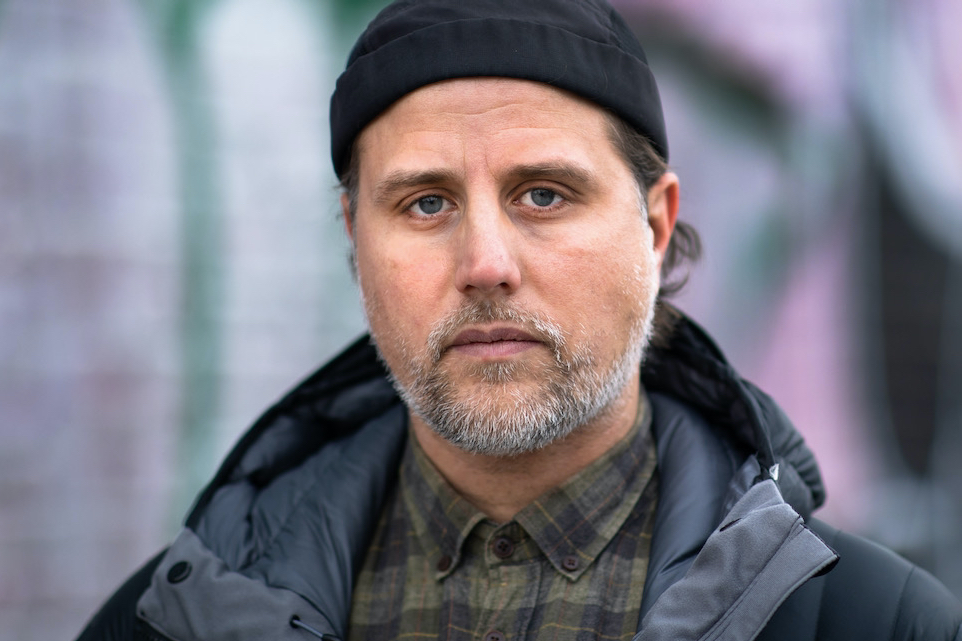
Joshua Barndt, a community artist who had also done his master’s in community planning at the New School in New York, joined the NLT as a volunteer in 2014. He’d grown up in Parkdale, and was well aware of the diverse class interests at play there. At Fern Avenue Public School, his classmates included kids from all of the world, but also from all over the neighbourhood—some lived in the grand Victorians near High Park, while others lived in shelters. At the New School, he studied the Cooper Square Community Land Trust, and also saw in the CLT model a way to save Parkdale from intensifying class warfare. In 2018, after four years as a development coordinator, he became executive director of the NLT.
Under Barndt’s leadership, the NLT refined the M.O. they’d developed with 87 Milky Way: community members consulted and invited into the governance structure, and a deliberate, comprehensive, and transparent education process. Before acquiring or developing any property, Barndt and his team interviewed members of the community, collected and analyzed data, and then presented their findings publicly. The process emerged from an impulse of inclusion, but also, Barndt admits, some ignorance, too. “Milky Way felt like a good project,” he says, “but we knew that housing was the main priority, because that’s what residents told us. But because we didn’t have experience with housing development, we thought we should seek to understand the problem as best we could before we did anything.”
Join the thousands of Torontonians who've signed up for our free newsletter and get award-winning local journalism delivered to your inbox.

The NLT began to study Parkdale’s rooming houses, culminating in a comprehensive database of those properties, both licensed and unlicensed, and a report, “No Room for Unkept Promises,” which they presented to Toronto city council. The NLT discovered, not surprisingly, that the rooming houses had also been a victim of gentrification; landlords who’d once been comfortable renting out their buildings to low-income tenants were retiring, and these properties were falling into the hands of more profit-seeking owners. But the NLT saw a chance to intervene. “It was actually a concrete opportunity to step in and work with these older landlords,” Barndt says, “and purchase their buildings from them so we could preserve the buildings as affordable stock in our community.”
A bit easier said than done. While the city was receptive to their ideas, the NLT tried—and failed—to acquire a building 12 times over two years, applying to several different funding programs. Most of the time, they bumped up against the preconceived, persistent idea that affordable housing must be built, rather than acquired and converted; affordable housing programs at all levels of government were almost entirely earmarked for new construction only. In 2019, however, they were finally able to acquire a 15-room rooming house in South Parkdale, largely thanks to city councillor Gord Perks, who funded a pilot project with $1.5 million dollars from Section 37 community benefits charges, imposed on high-rise development. The city’s housing secretariat secured an additional $600,000 of provincial funding that allowed the NLT to renovate the building.
This first acquisition hinted at the scale that the organization was capable of. A couple years later, with a loan from the Vancity Community Investment Bank, it bought a 36-unit residential building, at 22 Maynard Avenue. As with their other building, the NLT served as the asset manager, with the Parkdale Activity Recreation Centre (PARC) acting as the property manager. As Barndt points out, this was one of the best-selling features of the CLT model. Social housing providers such as PARC and the YWCA are already at capacity and can barely handle the operations of their current assets, let alone plan new projects. The NLT takes that off their plate. “The land trust has a team that has development expertise and asset management expertise,” Barndt says, “and can keep track of funding programs and priorities. The social housing organizations can continue to focus on what they’re good at it, which is supporting tenants.” This policy work led directly to the city launching a new funding program, the Multi-Unit Residential Acquisition Program (MURA), which provided small grants to non-profits to acquire at-risk rental housing. It disbursed $20 million in grants in 2021 and 2022.
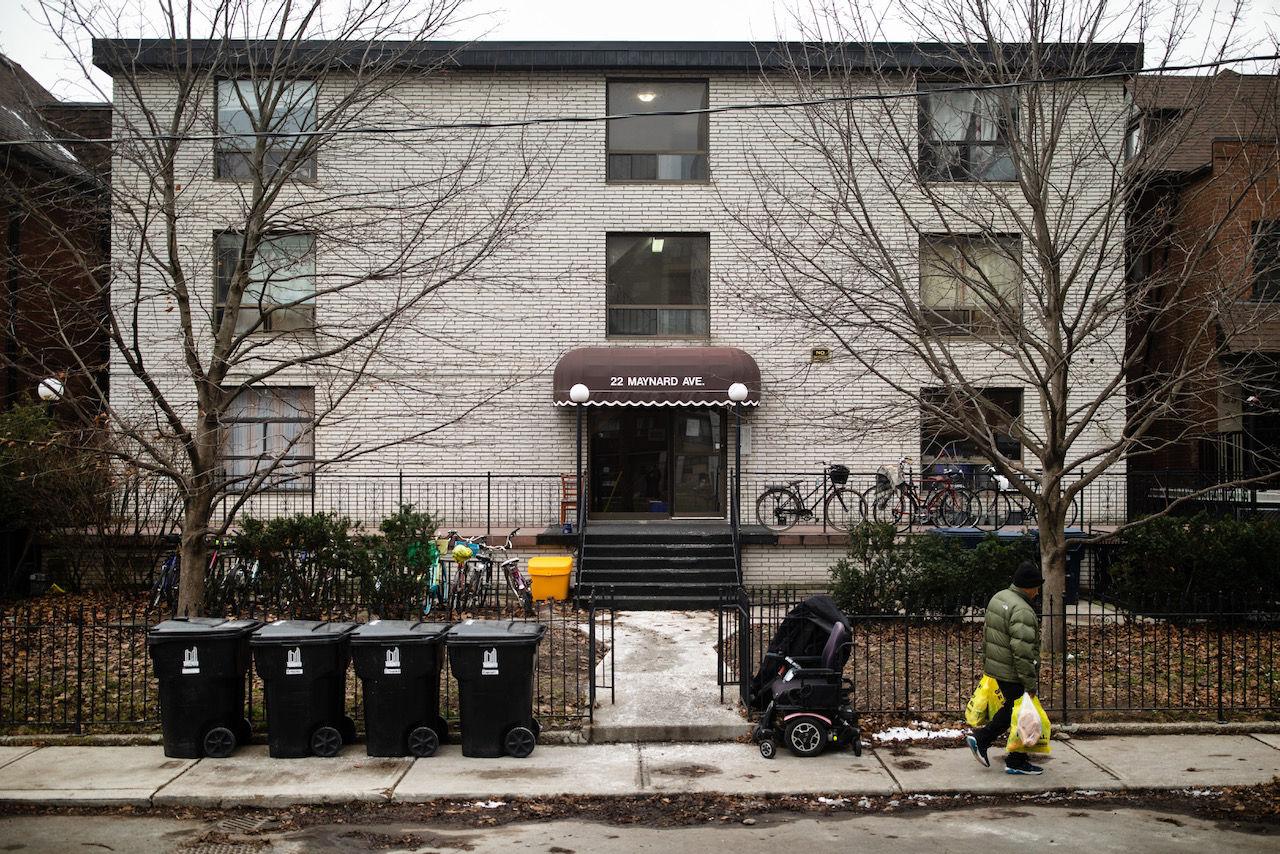
Those first properties were privately owned buildings, and allowed the NLT to do exactly what it set out to do—rescue and preserve affordable housing. But in February 2018, the city launched its Tenants First program and began the process of transferring its scattered homes. Both the NLT and the Circle Community Land Trust—a land trust founded for the express purpose of managing the bulk of the transfer—took over the homes in 2022. “We come from a similar ethos,” Barndt says of Circle, “but we have different ways of organizing ourselves just based on how we’ve come to be.” Circle’s portfolio represents a broader geographic range, largely in the city’s east end. And though they have some tenants who participate in governance, their board is more professionalized, comprising executive directors from various affordable housing organizations.
With the TCHC homes, the NLT’s housing portfolio expanded exponentially—it now had 84 properties under community ownership, with a total of 204 affordable rental units. Through foundation support and the Canada Housing and Mortgage Corporation, it secured $22 million for capital repairs and improvements. For Barndt, the additional scale wasn’t daunting; if anything, it only emboldened him, proving how capacious the model could really be. “There’s just so much more we can do, once we’re in control of our neighbourhood,” he says.
In anticipation of taking ownership of the homes, the organization did what it does best: educated itself about the challenges and issues. It produced yet another comprehensive report that detailed everything from how to better work with local Black and Indigenous-owned businesses to more sustainable retrofitting of houses. For the ongoing repair and renovation of the homes, NLT has employed tradespeople from Building Up, a contractor that runs a paid pre-apprenticeship program for individuals facing barriers to employment in construction. “We’re just at the beginning of understanding what’s possible,” Barndt says.
Still, despite Barndt’s optimism, a number of challenges remain. The housing crisis is enormous, multifaceted, and intractable. To cite just one obvious example: the Ford government recently pledged to build 1.5 million housing units over the next decade, reframing the problem as one of supply, rather than affordability. At the municipal level, as valuable as the MURA program is, it doesn’t, in the NLT’s view, receive adequate funding. The organization has recommended an increase to at least $50 million a year. It’s a paltry amount, but one still likely out of reach in a city with declining services and a massive operating budget shortfall.
Despite various initiatives over the years—and $2 billion earmarked in August 2022 for affordable housing—the federal government has only recently begun to shift its thinking on acquisitions versus new construction. Funding programs, however, have not yet followed suit. Barndt expects they will, in time, if only because of the math. “Land costs and construction costs are very high,” he says, saying that building a new unit currently costs about $500,000. To acquire and renovate a similar size unit, he argues, is roughly half that. To build a new property also takes about five years. Buy an existing building, and you can make an impact tomorrow. “When we talk to the federal government,” Barndt says, “We say, ‘You’d like there to be more affordable housing. Well, your investment can produce twice the number of units if you use this strategy.’”
The NLT’s work doesn’t let government off the hook; on the contrary, it depends on government investment and engagement. But its impressive growth, and the growth of community land trusts across the city and country, illustrate that the model’s alternative solutions can work and are worth investment. Aside from the Parkdale NLT, Toronto is also now home to the Kensington Market Land Trust, and a nascent land trust recently formed in the city’s Chinatown. In September 2022, the City of Vancouver struck a deal with the Hogan’s Alley Society to create a land trust to revive that historic Black neighbourhood. “We’ve had success in growing,” Barndt says of the NLT, “but it doesn’t mean our community’s problems are solved. There’s still so much we need to do.”
Anthony Foster’s apartment is just down the street from where Jane Jacobs once lived, at 69 Albany Avenue. There’s a small, simple blue plaque that marks the dates of her residence, 1971 to 2006. Foster says he passes the plaque every day when he takes Abby out for a walk.
Jacobs, of course, was an urban planning revolutionary, who argued that bulldozing run-down, desolate and dangerous “slums” and replacing them with large new housing projects untethered from neighbourhood life was a grave mistake. Her solution was what she referred to as “unslumming”—basically, slow and managed community-led gentrification. But that process, as many critics have remarked, can easily lead to unchecked gentrification and housing speculation. We’ve seen it in San Francisco, in London, in Toronto.
The community land trust model, however, might be the best version of what Jacobs proposed. It safeguards more diverse housing in gentrifying areas, while also helping residents participate in the life of their homes and neighbourhoods. It engenders pride and responsibility, giving residents more skin in the game, so to speak. It also, finally, brings a community together.
“Neighbours that have never spoken to each other before are communicating about what’s going on,” Foster says of the NLT. “It’s led to such an increase in dialogue. I think it’s really advanced some necessary conversations about what type of city we want to be.”
This story was originally produced by The Local StoryLab for the Metcalf Foundation’s series on Inclusive Local Economies.
Our Rent Series is made possible through the generous support of Maytree.

